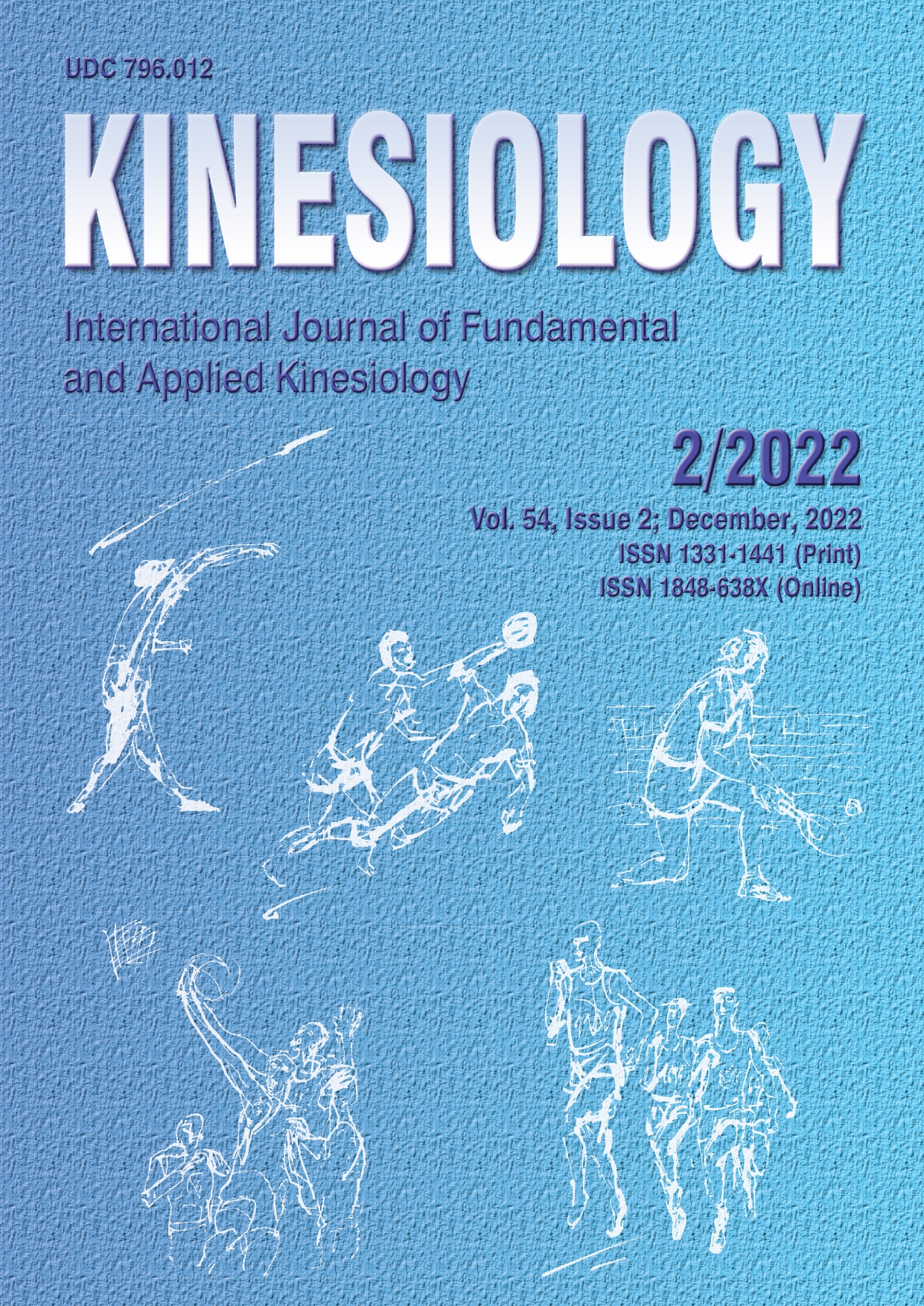INFLUENCE OF CUPPING TREATMENT ON HIGH-INTENSITY ANAEROBIC PERFORMANCE
Abstract
The use of cupping therapy prior to sports events has increased in popularity, with limited evidence to support its efficacy. The purpose of this study was to evaluate the efficacy of dry and wet cupping therapy on subsequent Wingate anaerobic test (WAnT) performance. Twelve trained men participated in this repeated measures randomized crossover study (age 24.9 ± 4.8 years; body mass index 27.6 ± 14.3 kg.m-2). Participants were familiarized with the ergometer and the Wingate anaerobic test on three separate occasions. They then randomly performed three experimental Wingate tests separated by 48-72 h after either dry cupping (DRY), wet cupping (WET), or no treatment (CON). Repeated measures ANOVA and Pearson’s correlation coefficient were used to analyze data and determine the relationships between WAnT and peak lactate and heart rate (HR). Peak power (PP), mean power (MP), and fatigue index (FI) were similar in all treatments (p=.47-.72). Heart rate (HR) and lactate increased similarly at all time points in all treatments (p<.001 for all comparisons). Post-WAnT peak HR was moderately negatively correlated with PP in all treatments and MP in CON only (p<.05 for all correlations). No other significant correlations were detected. The present findings demonstrate no beneficial effects of wet and dry cupping therapy, and hence do not support its use prior to high-intensity anaerobic sports events.
Key words: Wingate test, anaerobic power, fatigue, sprint cycling, all-out exercise performance, bloodletting cupping
Downloads
Published
How to Cite
Issue
Section
License

This work is licensed under a Creative Commons Attribution-NonCommercial 4.0 International License.
At Faculty of Kinesiology we recognize that access to quality research is vital to the scientific community and beyond. Kinesiology is non-profit journal and all costs of publishing and peer review process are covered by the publisher itself or other funding sources like Ministry of Science and Education of the Republic of Croatia. Full text papers are also available free of charge at http://hrcak.srce.hr/kineziologija. There are no restrictions on self archiving of any form of paper (preprint, postprint and publisher's version).
Articles are distributed under the terms of the CC BY - NC 4.0
Kinesiology does not charge any fees to authors to submit or publish articles in our journal.


